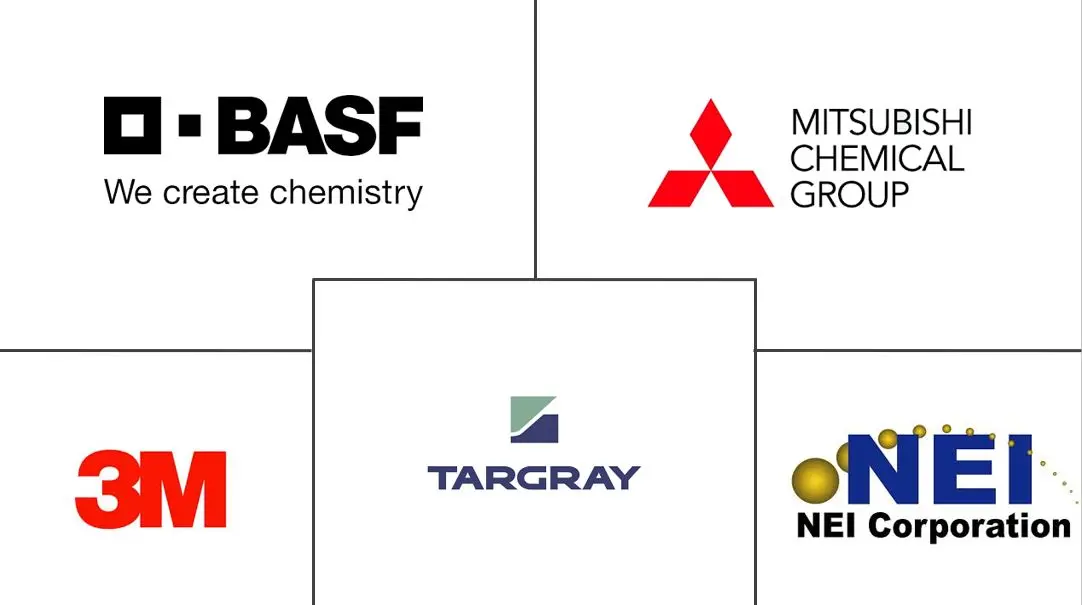Europe Electric Vehicle Battery Electrolyte Market Size and Share
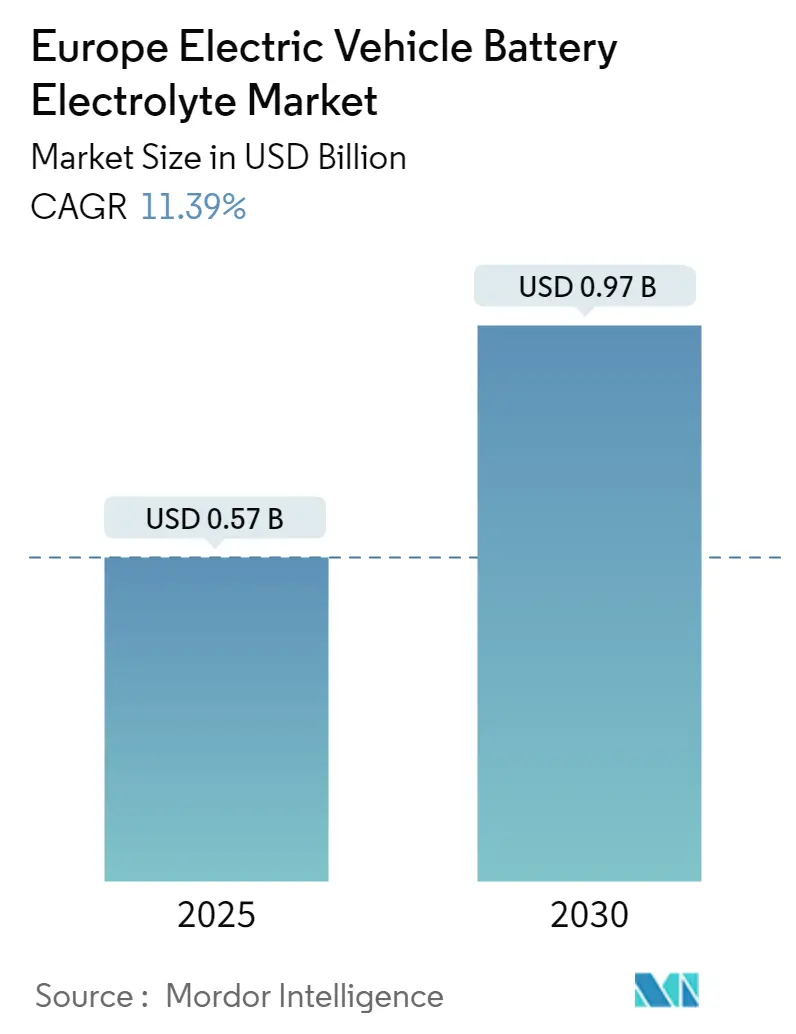
Europe Electric Vehicle Battery Electrolyte Market Analysis by Mordor Intelligence
The Europe Electric Vehicle Battery Electrolyte Market size is estimated at USD 0.57 billion in 2025, and is expected to reach USD 0.97 billion by 2030, at a CAGR of 11.39% during the forecast period (2025-2030).
- Over the medium term, the growing adoption of electric vehicles and advancements in battery technology across the region are expected to drive the demand for the electric vehicle battery electrolyte market during the forecast period.
- On the other hand, the technological challenges in Solid-State electrolytes can significantly restrain the growth of the electric vehicle battery electrolyte market.
- Nevertheless, the innovation in electrolyte formulations that improve battery performance, safety, and lifespan, particularly for high-performance or long-range EVs creates significant growth opportunities in the electric vehicle battery electrolyte market in the near future.
- Germany is anticipated to be the fastest-growing country in the European electric vehicle battery electrolyte market during the forecast period due to rising EV adoption.
Europe Electric Vehicle Battery Electrolyte Market Trends and Insights
Lithium-Ion Batteries Type to Witness Significant Growth
- The European EV battery electrolyte market is a pivotal segment of the electric vehicle (EV) supply chain, intricately linked to the production of lithium-ion batteries, the primary energy storage solution for EVs. Europe has seen a notable uptick in electric vehicle adoption, spurred by stringent emissions regulations, government incentives, and heightened environmental consciousness. These elements are driving a pronounced demand for lithium-ion batteries and, by extension, battery electrolytes throughout the region.
- Lithium-ion batteries are indispensable to the EV market, prized for their high energy density, extended cycle life, and relatively low self-discharge rate. The pricing of lithium-ion batteries significantly influences the overall cost of electric vehicles. Given their pivotal role, electrolytes directly impact battery pricing.
- For example, a Bloomberg NEF report highlighted that in 2023, battery prices fell to USD 139/kWh, marking a 13% drop from the prior year. With ongoing technological advancements and manufacturing optimizations, projections suggest battery pack prices will further decline to USD 113/kWh by 2025 and USD 80/kWh by 2030. As lithium-ion battery production ramps up—thanks to enhanced manufacturing efficiencies, bulk raw material procurement, and streamlined supply chains—the per-unit cost of battery electrolytes is also expected to decrease during the forecast period.
- Additionally, as the EV industry demands higher energy densities, quicker charging, extended life cycles, and enhanced safety, lithium-ion battery technology is evolving to meet these needs. Recently, top EV battery firms have embarked on multiple initiatives to advance lithium-ion battery technology.
- For instance, in November 2023, Toshiba Corporation introduced an innovative lithium-ion battery featuring a cobalt-free, 5V-class high-potential cathode material. This versatile battery finds applications ranging from power tools to electric vehicles. Significantly, Toshiba's advanced cathode, especially when used with a standard high-conductivity electrolyte, shows a notable decrease in gas generation. Such advancements are poised to bolster the demand for sophisticated lithium-ion batteries and, consequently, EV battery electrolytes in the foreseeable future.
- Furthermore, leading battery manufacturers are ramping up production capacities in Europe, responding to the surging EV demand and, in turn, propelling the electrolyte market. In November 2023, the UK government announced a GBP 50 million (USD 63 million) investment to fortify the EV battery supply chain, emphasizing lithium-ion batteries. The Battery Strategy, extending to 2030, promises dedicated support for zero-emission vehicles, batteries, and their supply chains, including fresh capital and R&D funding. Such initiatives are anticipated to boost lithium-ion battery production and, subsequently, the demand for EV battery electrolytes during the forecast period.
- In conclusion, these initiatives and innovations are set to amplify lithium-ion battery production in Europe and elevate the demand for EV battery electrolytes in the coming years.
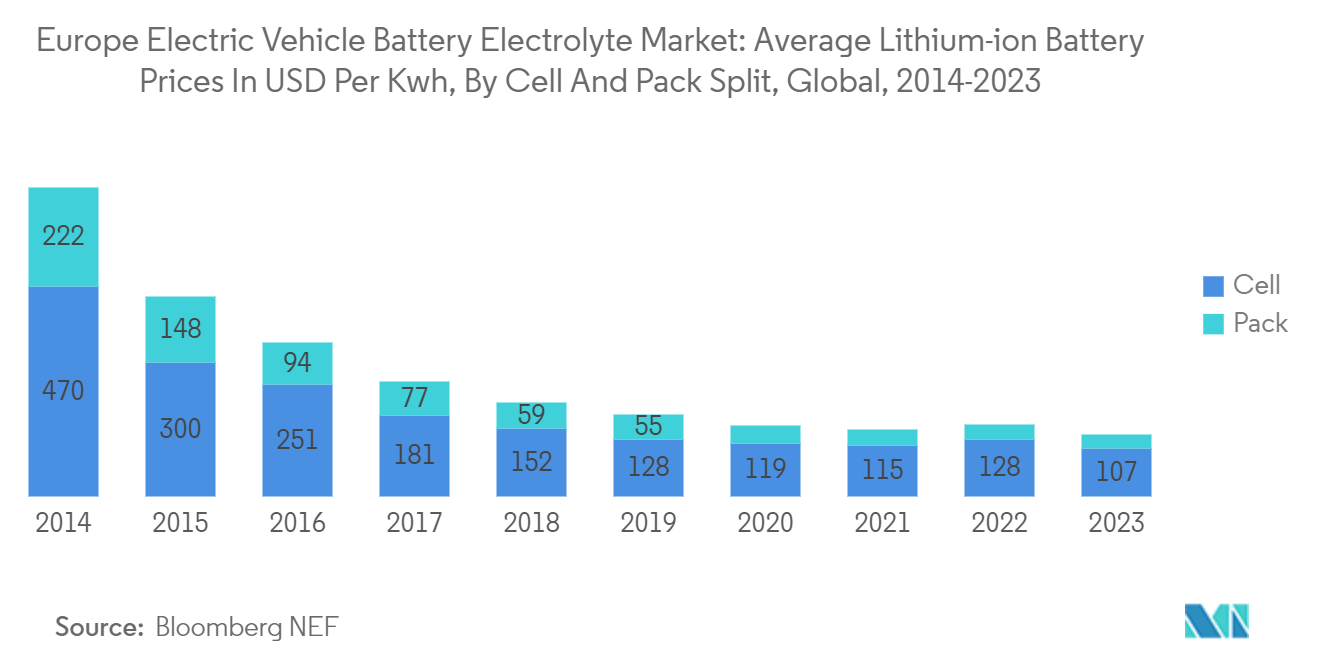
Germany to Witness Significant Growth
- Germany, the largest automotive market in Europe, is at the forefront of electric vehicle (EV) adoption, outpacing other major countries in the region. The nation's commitment to green energy, coupled with stringent environmental regulations, has accelerated the uptake of EVs. This surge in EV adoption has, in turn, heightened the demand for essential components, notably EV battery electrolytes.
- In recent years, Germany has seen a notable uptick in EV sales, driven by heightened consumer demand, growing environmental consciousness, and government incentives like tax credits and rebates. As EV adoption has surged, so too has the demand for lithium-ion batteries and their high-quality electrolytes.
- According to the International Energy Agency (IEA), Germany recorded sales of 0.7 million electric vehicles, matching 2022's figures but representing a 5.5-fold leap from 2019. With the government rolling out supportive policies, EV sales are poised to climb in the coming years.
- As a dominant player in both automotive and battery manufacturing, Germany is channeling substantial investments into R&D, aiming to bolster battery efficiency and performance. Given that advanced battery electrolyte formulations are pivotal for enhancing battery life, safety, and energy density, they are set to be a central focus of innovation in the nation's EV batteries.
- In a notable development, a consortium of 15 companies and university researchers, spearheaded by VARTA, introduced groundbreaking sodium-ion battery technology in May 2024. Their ambition is to develop high-performance, cost-effective, and environmentally friendly batteries for EVs and other applications, with a project completion target set for mid-2027. Such advancements are anticipated to boost the demand for sophisticated EV batteries and, by extension, their electrolytes in the region.
- As the industry pivots towards solid-state batteries, heralded for their superior energy density and safety, there's an emerging need for novel electrolytes. Recently, multiple agreements have been inked to cater to the burgeoning demand for these batteries in the automotive realm.
- For example, in July 2024, Volkswagen Group's battery arm, Powerco, entered into a partnership with QuantumScape to commercialize its state-of-the-art solid-state lithium-metal battery technology. Upon achieving certain technical benchmarks, QuantumScape is poised to grant PowerCo a license for mass-producing batteries based on its proprietary platform. Such collaborations are set to amplify the demand for solid-state batteries and ensure a consistent supply of electrolytes for their production.
- Given these developments, it's evident that Germany's EV production is on an upward trajectory, further fueling the demand for EV battery electrolytes in the foreseeable future.
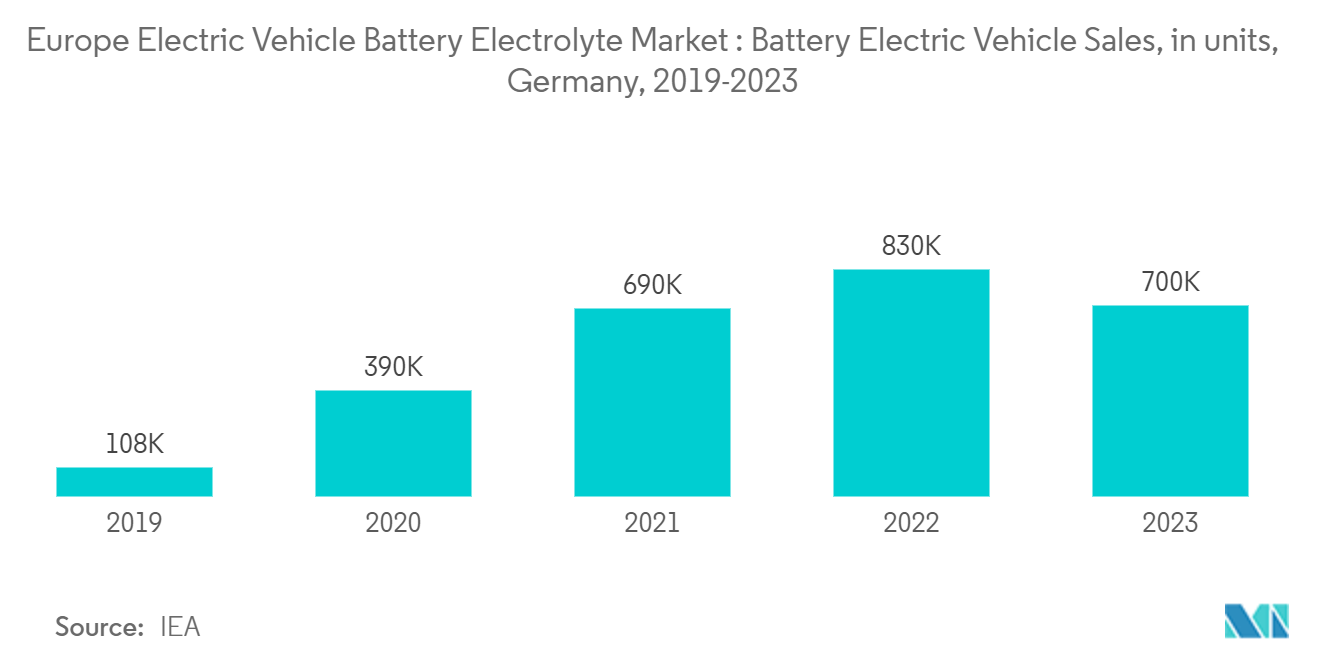
Competitive Landscape
The Europe Electric Vehicle Battery Electrolyte market is moderated. Some of the key players (not in particular order) are 3M Company, BASF Corporation, Mitsubishi Chemical Group, Targray Technology International Inc, NEI corporation, among others.
Europe Electric Vehicle Battery Electrolyte Industry Leaders
-
Targray Technology International Inc
-
Mitsubishi Chemical Group
-
BASF Corporation
-
3M Company
-
NEI corporation
- *Disclaimer: Major Players sorted in no particular order
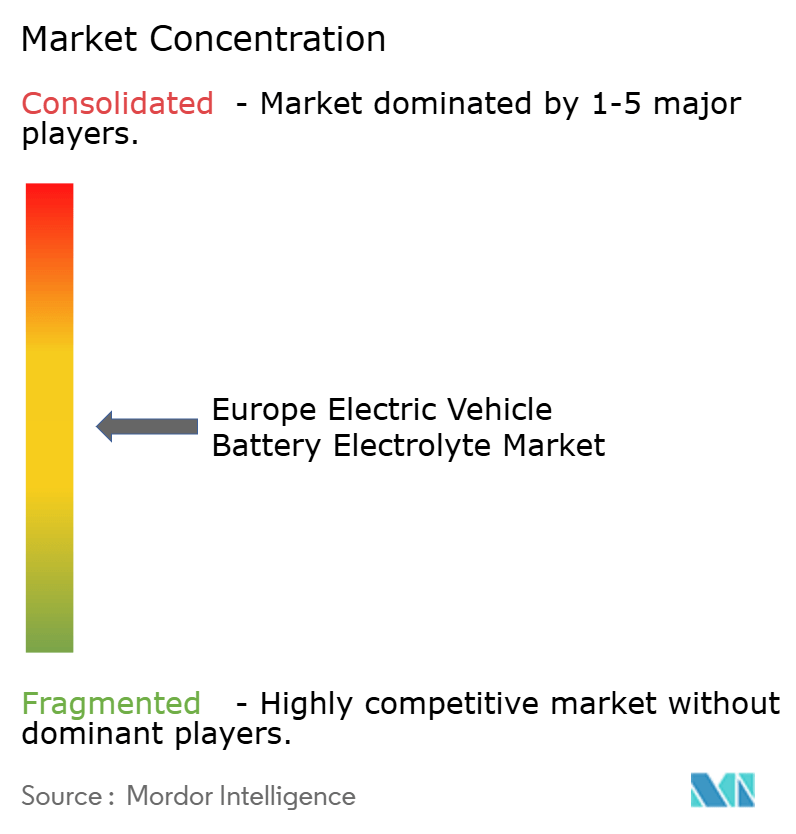
Recent Industry Developments
- February 2024: Bardé's team enhanced the electrolyte technology initially created at Imec. In the last 18 months, the company has achieved an 18-fold reduction in the thickness of its electrolyte separator, thereby increasing the energy density of its battery. While conventional lithium-ion batteries predominantly utilize liquid or gel electrolytes, the new generation of lithium-metal batteries is being engineered with solid electrolytes.
- January 2024: At the Battery Show Europe 2024, Capchem unveiled its state-of-the-art technology and comprehensive electrolyte solutions. Their showcase included innovative offerings such as high-voltage, high-nickel, and sodium electrolytes, complemented by new materials. Furthermore, Capchem hosted a tour of their factory in Poland for global industry representatives, highlighting their dedication to providing localized supply solutions in Europe.
Europe Electric Vehicle Battery Electrolyte Market Report Scope
An EV battery electrolyte is a chemical medium that allows the flow of electrical charge between the cathode and anode within an electric vehicle (EV) battery. The electrolyte facilitates the movement of ions, which are essential for the charge and discharge processes of the battery.
The European electric vehicle battery electrolyte market is Segmented by Electrolyte Type, Battery Type, and Geography. By Electrolyte Type, the market is segmented into Liquid Electrolyte, Solid Electrolyte, and Gel Electrolyte. By Battery Type, the market is segmented into Lithium-Ion Batteries, Lead-Acid Batteries, and Others. The report also covers the market size and forecasts for the Europe EV battery electrolyte market across major countries. The Report Offers the Market Size and Forecasts in Revenue (USD) for all the Above
| Lithium-Ion Batteries |
| Lead-Acid Batteries |
| Others |
| Liquid Electrolyte |
| Gel Electrolyte |
| Solid Electrolyte |
| Germany |
| France |
| United Kingdom |
| Italy |
| Spain |
| NORDIC |
| Russia |
| Turkey |
| Rest of Europe |
| Battery Type | Lithium-Ion Batteries |
| Lead-Acid Batteries | |
| Others | |
| Electrolyte Type | Liquid Electrolyte |
| Gel Electrolyte | |
| Solid Electrolyte | |
| Geography | Germany |
| France | |
| United Kingdom | |
| Italy | |
| Spain | |
| NORDIC | |
| Russia | |
| Turkey | |
| Rest of Europe |
Key Questions Answered in the Report
How big is the Europe Electric Vehicle Battery Electrolyte Market?
The Europe Electric Vehicle Battery Electrolyte Market size is expected to reach USD 0.57 billion in 2025 and grow at a CAGR of 11.39% to reach USD 0.97 billion by 2030.
What is the current Europe Electric Vehicle Battery Electrolyte Market size?
In 2025, the Europe Electric Vehicle Battery Electrolyte Market size is expected to reach USD 0.57 billion.
Who are the key players in Europe Electric Vehicle Battery Electrolyte Market?
Targray Technology International Inc, Mitsubishi Chemical Group, BASF Corporation, 3M Company and NEI corporation are the major companies operating in the Europe Electric Vehicle Battery Electrolyte Market.
What years does this Europe Electric Vehicle Battery Electrolyte Market cover, and what was the market size in 2024?
In 2024, the Europe Electric Vehicle Battery Electrolyte Market size was estimated at USD 0.51 billion. The report covers the Europe Electric Vehicle Battery Electrolyte Market historical market size for years: 2019, 2020, 2021, 2022, 2023 and 2024. The report also forecasts the Europe Electric Vehicle Battery Electrolyte Market size for years: 2025, 2026, 2027, 2028, 2029 and 2030.
Page last updated on:
Europe Electric Vehicle Battery Electrolyte Market Report
Statistics for the 2025 Europe Electric Vehicle Battery Electrolyte market share, size and revenue growth rate, created by Mordor Intelligence™ Industry Reports. Europe Electric Vehicle Battery Electrolyte analysis includes a market forecast outlook for 2025 to 2030 and historical overview. Get a sample of this industry analysis as a free report PDF download.
